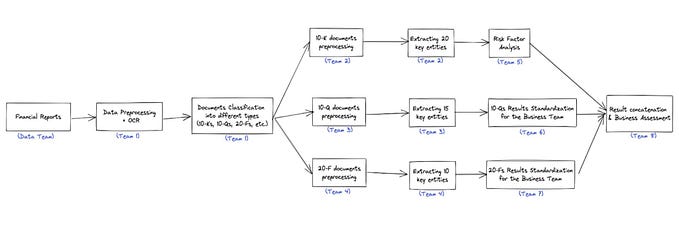Building a founder brand is your job. Here’s how to do it…

This piece was first published in Sifted — HERE
Prior to founding OLIO, I had no professional brand whatsoever. I wasn’t to be found speaking on stage at industry events, commanding a room of networkers or espousing on social media.
However, I quickly discovered that building a “founder brand” is a critical part of the founder’s role. In the early days of a startup, it’s much less about being the CEO in the classic sense and more about being “the chief evangelising officer”.
With limited capital, building your founder brand can be one of the most cost-effective and compelling ways to build your company’s brand in parallel — with investors, the media, prospective partners and recruits, and of course, your user base.
Choose your “founder brand” approach
There are three different approaches you can take to building a founder brand.
The first is what I call “The Representative” approach. This involves speaking proactively on matters that directly relate to the affairs of your startup only and limiting your sphere of influence to your immediate industry press. For example, if you’re the founder of a mobility startup, you may only give commentary on issues related to mobility and announce news in specialist mobility media. This is the least personally exposing of the approaches that will still get the job done; however, it results in the fewest force-multiplying effects for your business.
The second is what I call “The Evangeliser” approach, and it is the route that Saasha (my cofounder) and I have taken. This means we seize pretty much any opportunity we can to speak about OLIO and our journey! As a result, we’re required to talk not only about topics that are directly related to what we’re doing (building a hyper-local sharing app to reduce waste), but we’ve also had to develop well-thought-out positions on topics that are adjacent to us such as sustainable living, the climate crisis and company building more broadly.
This approach involves a lot more effort and emotional energy. It can come with a good dose of imposter syndrome — “Who am I to comment on something I’m not an expert about?”
The key is reminding yourself that it’s your work persona who’s doing all the heavy lifting — which also prevents this approach from becoming too intrusive on your private life.
The third approach is what I’d call the “Brand Ambassador” approach and is when as founder you become the — very public — living embodiment of your brand. Some examples of founders who embody this are Kim Kardashian, Gwyneth Paltrow and Elon Musk.
Whilst there can be enormous benefits to this approach in terms of the exposure it can bring to your business — assuming you’re good at it of course — there can also be significant downsides from a privacy and mental health perspective, meaning it’s not something to be undertaken lightly. For anyone considering this route, it’s well worth reading Sharmadean Reid’s blog post about the toll this approach has taken on her and so many other female founders.
Be authentic & tell stories
Once you’ve chosen your approach, it’s important to recognise that brand building is a marathon, not a sprint; and it only works if it’s truly authentic and comes from within. Now is not the time to be anyone other than an amplified version of yourself.
This also means there’s no brand-building blueprint to follow — you need to do what feels right for you and your business. Remember that the most powerful message is the one that’s personal, so lean into storytelling as a medium to convey both your perspective and your brand.
Pick your poison
A founder with a significant Twitter following, who I respect enormously, once told me that I too needed to double down on Twitter if I really wanted to grow OLIO. This troubled me for quite some time, because while my head agreed this could be an enormously powerful strategy, my heart told me I’d never been a 140-character kind of person.
I left this dilemma about how to brand-build digitally unresolved until about three years ago, when I was so incredibly incensed that the mainstream media was providing zero coverage of Earth Overshoot Day that I couldn’t help but put pen to paper for my first ever Medium post.
It was through this experience I realised that I enjoy longer-form writing and that LinkedIn is an extremely effective platform for dissemination. This, coupled with speaking on podcasts and at events, has become my poison of choice.
Everyone needs to pick their own path, but what’s most important is to play to your strengths and focus on what you enjoy the most.
Start small
I was once advised to turn down smaller speaking opportunities until the “big ones” came along, so my founder brand wouldn’t become “devalued”. This is something I’ve roundly ignored, and in the early days of OLIO I would turn up and speak at the opening of an envelope!
Getting experience at smaller events can enable you to refine your craft and develop your style, which will then bring the bigger opportunities knocking. However, as your brand grows you need to be careful not to spend too much time evangelising rather than executing, as no sustainable business was built on evangelising alone.
Silence the imposter
I don’t know anyone who hasn’t felt like a massive imposter on their first couple of forays into personal brand building. But if you start small, and focus on what only you know about — your business — then you will quickly build confidence and start to extend your domain.
Be bold and brief
Having an audience is an incredible privilege; something far too many speakers seem to forget. You need to make sure you work hard both ahead of time and in real time, to deliver a perspective that’s both pointy and to the point. A well-crafted soundbite can reverberate far beyond the room.
And if you’re a diverse founder make sure to highlight, rather than hide, that unique perspective — you will be pleasantly surprised to discover that sharing your story can change lives.
The first time, every time
I once complained to my husband that it was exhausting having to recount my founding story time and time again, and it was starting to feel disingenuous.
He immediately asked: “How do you think Prince feels performing Purple Rain?”
Boom.
I immediately realised that this is my job — and more than just that, I need to make every performance feel like the first.








